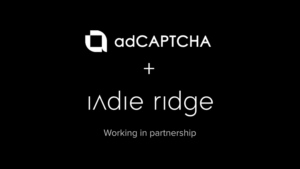Rob Webster is Founder of Canton Marketing Solutions. He’s worked in the adtech industry since 2001 and is NDA’s monthly columnist.
In this month’s timely column, he outlines a manifesto for rebuilding adtech for the benefit of all.
Where have we come from!
Digital ad technology is now around 25 years old with ‘Digital Marketing’ really starting as a concept in about 1995. In all that time four early inventions have shaped the industry to this day.
- The first is the concept of the page impression and the rotation of banners from about 1996.
- The second is the frequency cap from about 1998.
- The third is the post-event sales tracking tag, invented by DoubleClick as the Floodlight around the turn of the millennium. Allowing for sales to be attributed to ads.
- The retargeting tag invented around the turn of the millennium alongside post-click tracking. Prominent by about 2002.
Everything we now see in digital ad tech is born out of these four prominent technologies — invented really for the stone age or at best bronze age of the internet when a web page looked like this.

The prevalence of these technologies has led to a digital marketing ecosystem with significant challenges. An over reliance on retargeting. Bottom of the funnel marketing activity dominating ad spend. Too much value being assigned to a simple impression without considering whether the ad was actually seen or useful.
Such techniques have seen publishers and advertisers miss out. Quality publishers have found that their valuable audiences are being cannibalised by the long tail. Advertisers have fared better but have still been left with poor measurement and buying practice.
These technologies and techniques were turbocharged by the growth in web traffic from social media from 2006 and from the programmatic revolution from 2008-2012. Suddenly these technologies designed for use by a single ad server were being syndicated across the ecosystem.
The situation emerged where customers’ cookie IDs are broadcast to thousands of companies millions or even billions of times a day.
Time for a change!
The long overdue retiring of the third-party cookie over the next two years will need a fundamental rebuild for much of digital ad technology. This reset gives us the opportunity to go back to marketing fundamentals and consider how we want the digital ecosystem to work.
Too few programmatic buyers actually have any understanding of marketing fundamentals.
Adtech must also be rebuilt from the point of view of the customer. This was little considered 20 years ago and those building the prominent solutions then could not have imagined how bloated and monstrous their creations would become.
Privacy by design is the new paradigm and we need to consider how marketing activity can be done in this new world.
So what does this world look like? Well let’s look at our original four points and consider how we would change them to suit this new world.
- The Page Impression. This needs to migrate to the concept of in-view dwell time. More emphasis given to the publisher and the spot also. This is a far better solution and will reward publishers that create good brand-safe environments for advertisers. Some innovative companies like Avocet have been pioneering this approach for some time with excellent results. Having it baked into how media is bought though will help spread good practice across the ecosystem.
- The frequency cap is an important control yet tied up with identity. As to know if you have seen the ad enough is also potentially to know on what sites you saw it. Single publisher frequency caps can be used that do not violate frequency. When customers use logged in environments the login can act as a frequency cap at a wider scale. Some will bemoan the loss of wider frequency caps but this is a consequence of the privacy-by-design philosophy and the emergence of ever more walled gardens. Remember that in this new world there will be much less retargeting, the most common abuser of frequency, and so the impact of this loss will be greatly offset.
- Post-event sales tracking has become a vital part of the digital marketing. In this new world post-click tracking will still work effectively either through session=based techniques or via the new browser api tools highlighted in Chrome Sandbox. What we want then is also a way of handling post-impression tracking and attribution in a privacy-by-design way. Exactly how this will be done is still to be found however it looks like being through some combination of browser data provided via an API, first=party matched data, panels and expose control tests perhaps at a GEO level. There is a huge amount of work to do here and its going to be a big change. However if we get it right we can provide a strong attribution framework whilst respecting the needs of the customer. Today most brands are not measuring media appropriately, over focussing on the bottom of the funnel brand search and retargeting. A reboot here then is welcome as it can kickstart better practice that will again reward good publishers and other actors.
- The Retargeting tag. Retargeting tags have driven both retargeting and customer targeting. European legislation is very clear (and global technology and legislation looks to be following suit) that any data targeting that occurs needs to have the expressed consent of the consumer. Now customer targeting has the benefit that because it is tied to a customer account the advertiser or brand has the opportunity to ask and properly control consent. It is not clear in the case of retargeting that can happen, simply looking at a product does not constitute that you want to be constantly messaged about this product. The current consent framework recommended by industry bodies surely cannot survive future regulation and technology changes and so a new approach is needed. This is likely to be based on first party login data. Retargeting may require a user to login to be eligible to demonstrate and control consent. The benefit of it being first party is that the customer is demonstrating consent with brands that they are familiar with, either the Advertiser and or the Publisher not unknown ad tech players as today.
The above changes to core underlying technology and methodology will filter through to all parts of the display ecosystem particularly. It is a sad fact that regulatory and technological changes will impact dominant firms like Google, Facebook and Amazon the least as they already have the logged-in environments that will be so crucial in a privacy by design world.
Yet this change does allow the independent sector to look to define display and also re create its reason to be. Amazon, Facebook and Google do not inter operate well together at this time and are unlikely to do so in future.
This means that independent ad technology can own the space as the joiner up of various walled gardens and ecosystems. This again is how it should be as you want independent companies to control media neutral execution and measurement.
To the above changes I would add the following advancements to the ad tech ecosystem.
- A world with appropriate walls. Walls can be good as they can keep out bad actors. Equally a world with walls that are too high and do not have enough doors can be a dark place. I would like to see a preferred payer’s scheme such that brands can choose to only book media with publishers that have a clean payment and account record. Any incidents of fraud or malicious content would go against this record.
- Marketing fundamentals baked into adtech. Most campaigns can be referenced as either Brand (Awareness and Consideration), Direct Response (new customers) or Customer/Loyalty. These settings can indicate what data is to be used (1:1 data is not needed for Brand for example). Direct response advertising need not be 1:1 and can be about lookalikes or indeed context and GEO optimised information. Outside of targeting. what measurement is in place and how campaigns are to be optimised are also templatable by goal. Greater clarity here will aid budget setting and planning. If Customers know what an ad is for they can also evaluate its appropriateness much more.
- Customer feedback. Customer communication is such a strong part of marketing and yet digital marketing has not lived up to its potential here. If customers can let publishers and advertisers know what ads they like and don’t like. Some information on why and indeed where appropriate open up wider forms of communication advertising and publishing will be the richer for it. Premium publishers that can best open up that conversation with customers will do best which again is how it should be.
Such changes are long overdue in the digital marketing ecosystem. Yet just as TV and Out of Home look set to go online it is a great time for adtech to get its house in order.
I am always optimistic about the future of advertising and now never more so. To me a privacy by design world is one that will benefit not only the Customer but also our crucial premium publishers that are a vital part of democracy.
This in turn will create a ad marketplace advertisers will be proud to engage in.












